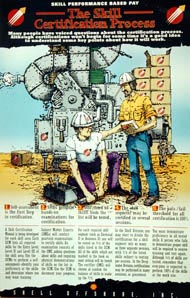 |
| Performance Consulting | Marketing and Communications | Methods, Tools and Software |
|
© Daniel Follette, Inc. 2025
|
|
|
Behavioral
analysis provides a means to see the real work Other definitions might include tasks such as "complete resource leveling on highway marking estimates," "calculate production costs for custom bandage production," or "complete customer account request." From a decision-making standpoint, traditional categories of activity and job descriptions are pseudo-classifications because they provide a grouping of activity, but no information about the impact the work or work quality has on the company. Nor can traditional analysis by activity or job classification make the link between specific failures and corrective action. And because of that, they can make no assessment of the cost of correction. For example, to create a budget, a department manager needs to know how much money goes out for clerical staffing. But to manage the work, that manager needs to know how much clerical time is consumed by each task the department performs. In fact, if the manager can define the resources needed to perform all the tasks the department performs, that manager can produce a very justifiable budget. Any meaningful assessments of aggregate work requires task-based, not activity-based, analysis. Task-based
opportunity assessment For example, a team might look at a task such as "maintain fluid levels in compressors" and conclude, "in three cases, failure to maintain full lube oil level shortened bearing life by 10 months at a cost of $72,000. In two other incidents, failure to recognize lube oil consumption resulted in complete bearing failure. The cost of those two incidents was $125,000." With tasks, you can link a behavior and a consequence. And you can quantify those consequences. You can also select corrective actions and attach corresponding costs. Comparison of the loss with the cost of correction produces a task-specific ROI. Repertoire™
Work Process SkillForge™
Software |
|
case
studies resources clients |
